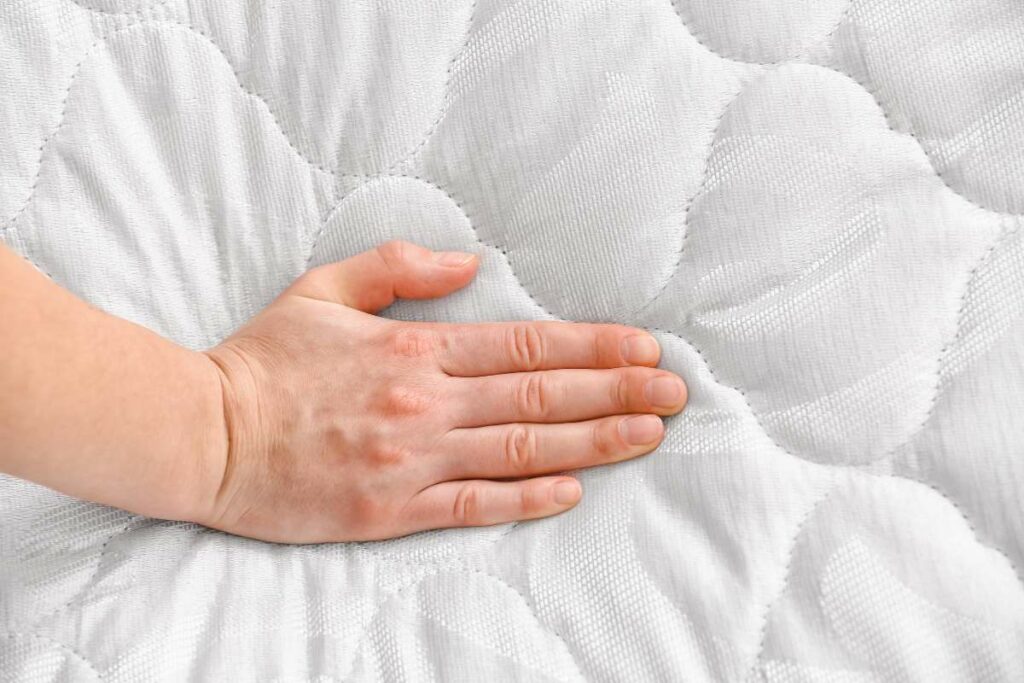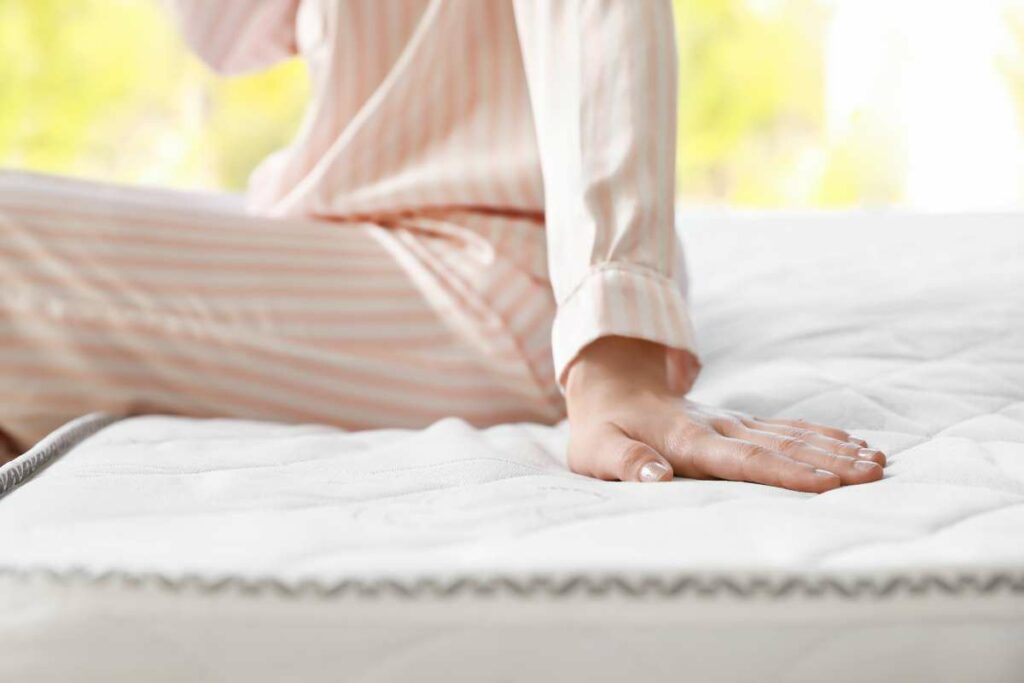
Mattresses with orthopaedic support have been around for quite some time. This sleep mattress has been extensively promoted as an ergonomic support for our body during our sleep period. While it is true that orthopedic mattresses offer a number of advantages, they also have certain drawbacks, which you will surely not enjoy. I and my team examined the orthopaedic mattress from all angles to find out the minute detail about the same. So, here in this article, we have tried to present the Disadvantages of Orthopedic mattresses, which will help you understand your requirements and save you from causing any further damages to your health.
So What is an Orthopaedic Mattress?
An orthopaedic mattress is a mattress which is designed solely for the purpose of supporting the body’s back, joints and overall health. As it relates to the spine and bones, orthopaedics has been influential in this study. Orthopaedic mattresses are designed to alleviate discomfort caused by illnesses such as arthritis, joint pain, general back pain and osteoporosis. To accomplish this, it is helpful to have a mattress that is quite firm. With this mattress, every part of your body is supported, reducing the possibility of pain, since it conforms to the shape of your body.
List of Disadvantages of Orthopedic Mattress
High Cost
Orthopaedic mattresses are typically more expensive than regular mattresses due to the specialized materials like Memory Foam, SmartGrid, Lates and coil technologies used in their construction. While a normal innerspring or memory foam mattress can be bought in India for under ₹7,000, orthopaedic mattresses usually start from ₹10,000 and can go up to ₹50,000.
The high cost is attributed to factors like:
Use of premium quality materials like latex, memory foam, gel-infused foams etc. that are designed to relieve pressure points and contour the body. These materials are more expensive than standard spring or foam compositions.
Incorporation of advanced technologies like individually wrapped coils, zoned support systems, adjustable bases etc. to provide tailored spinal alignment and pressure relief. Such technologies require more R&D and production costs.
Customization and tailoring options allow adjusting the firmness levels and ergonomic support on each side of the mattress. This level of customizability adds to manufacturing complexity.
Not Supportive for all Body Types
Orthopaedic mattresses are engineered to provide customized support based on average body dimensions, weights and pressure points. However, every individual has a unique build and sleep posture. What may feel perfectly supportive to one person could put pressure on problem areas for another.

For example, larger-sized or heavier individuals may still feel pressure on their shoulders or lower back from an orthopaedic mattress rated for average weight. Likewise, petite framed or lightweight sleepers may feel the mattress is too firm in some regions.
The level and zones of ergonomic support may not match everyone’s exact needs. This means orthopaedic mattresses may not deliver pain relief benefits for all body types as effectively as they claim. Customization further drives up costs.
Difficulty Changing Firmness Levels
Once an orthopaedic mattress is purchased in a particular firmness rating, it is not always easy or cost-effective to adjust it later if the sleeper’s support needs change over time.

For example, a person’s back pain issues and pressure points may evolve as they age. Or they might change their regular sleeping position from back to side or vice versa. In such cases, the static ergonomic support of the orthopaedic mattress may no longer match requirements.
While some adjustable bases allow altering firmness on each side individually, the mattress core itself cannot be modified much. Replacing the entire orthopaedic mattress for a different firmness level involves a sizable new investment. This inflexibility can reduce the longevity of pain relief benefits.
Potential Off-gassing odours
Many premium memory foams, latexes and gel-infused foams used in orthopaedic mattresses are known to emit mild chemical odours upon initial unpacking and use. This occurs as they release volatile organic compounds (VOCs) trapped during manufacturing.

While the smells tend to dissipate within a few days as the mattress airs out, the strong chemical smells in the interim can cause irritation for those with sensitive olfactory senses or respiratory issues like asthma. The off-gassing is also concerning from an indoor air quality perspective.
Additionally, some orthopaedic mattress surfaces contain fire retardant chemicals that may continue emitting low levels of odours for weeks. This can negatively impact the sleep experience during the initial break-in period. Ventilation of the new mattress is important.
Potential Loss of Contour Over Time
The high-density memory foam used in orthopaedic mattresses is designed to perfectly contour and adapt to the body initially. However, the foams may lose some of their contouring ability and responsiveness over 5-7 years of continual use and compression by body weight.

As a result, the specialized ergonomic support profiles could flatten out marginally. The sleeper may feel less perfect spinal alignment and pressure point relief compared to when the mattress was new.
While orthopaedic mattresses still provide better support than innerspring options even after flattening, it does reduce their longevity for pain-free sleep as claimed by manufacturers. Replacing them every 7 years or so may be necessary to retain optimal contouring benefits.
Can Normal People Use Orthopedic Mattresses?
Orthopedic mattresses are designed to provide extra support for people with certain medical conditions like back pain, arthritis, injuries, etc. But can normal, healthy individuals truly benefit from using an orthopedic mattress?
What are the Features of Orthopedic Mattress?
Common features of orthopedic mattress are:
- Firm foam layers provide rigid support to prevent sagging
- Zoned areas target lumbar and cervical support
- High density foams evenly distribute body weight
- Minimal motion transfer when changing positions
Here let’s compares common orthopedic mattress types and key features:
Types of Orthopedic Mattresses
| Mattress Type | Key Features |
| Innerspring | Reinforced coils provide rigidity and edge support |
| Latex | Responsive latex gently conforms to body shape |
| Memory Foam | Dense foam cradles pressure points |
| Adjustable Air | Filled compartments are customizable |
Who Can Benefit from Orthopedic Mattresses?
Orthopedic mattresses are primarily recommended for:
- Those with chronic back, hip or shoulder pain
- People with spine conditions like scoliosis or kyphosis
- Athletes and active individuals placing repetitive stress on joints
- Anyone recovering from an injury requiring immobilization
However, these days many orthopedic mattresses cater to the average consumer without specific conditions.
Benefits for the General Consumer
For people without existing orthopedic concerns, these mattresses can still offer advantages:
Benefits Healthy People can Achieve
| Benefit | Description |
| Spinal alignment | Denser foams inhibit sagging to keep spine straight |
| Pressure relief | Even support helps reduce tossing and turning |
| Motion isolation | Changing positions less likely to disturb partner |
| Durability | Higher quality materials increase mattress lifespan |
| Cooling features | Some models include gels and breathability |
Considerations before Buying
While orthopedic mattresses have perks for many consumers, there are some considerations:
- The rigid structure can feel uncomfortably firm at first
- Weight limits around 250-500 lbs are stricter than other mattresses
- Unable to conform closely to body shape and sleep position preferences
- More expensive than generic mattress models of similar sizes
Trying in-store before buying can determine personal comfort and fit. Those who enjoy firmness and support may find the investment in their orthopedic mattress worthwhile even without specific medical requirements. Paying attention to trial periods and return policies is also wise in case the mattress does not suit an individual after some use.
Conclusion
While orthopaedic mattresses have undeniable advantages for back pain sufferers looking for specialized sleep surface support, they are not without some drawbacks. Their high cost, potential lack of universal compatibility with all body types, inflexibility to change firmness levels later and the issues of off-gassing smells or loss of contouring ability over time are definite concerns to consider.
Buyers should weigh these potential disadvantages carefully against their individual needs and budgets before investing in an orthopaedic version. Regular mattresses with advanced comfort layers priced reasonably low may still serve the purpose for many. But for those with severe, persistent back pain, the benefits of orthopaedic design make the higher costs worthwhile.
Also read,






